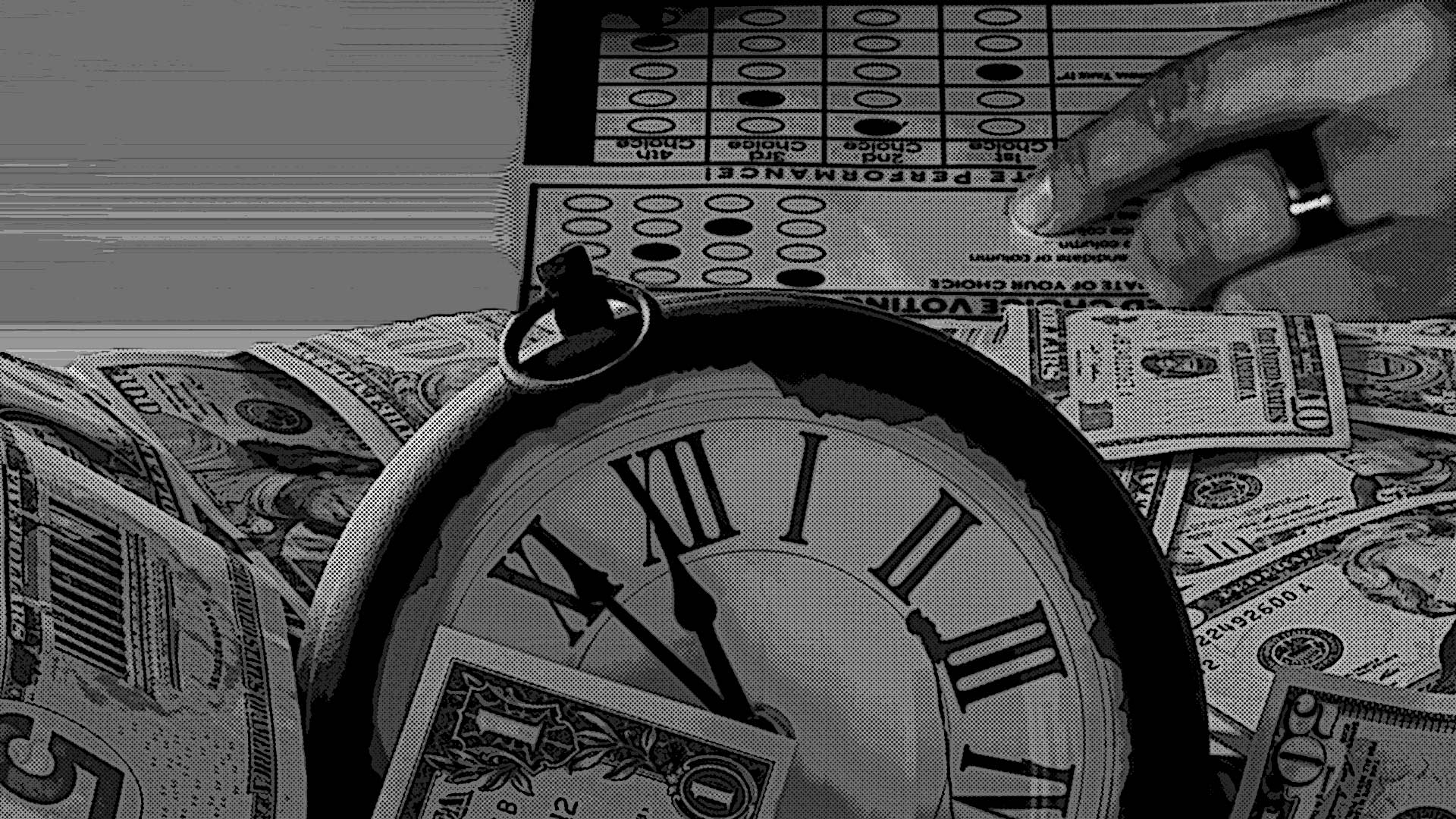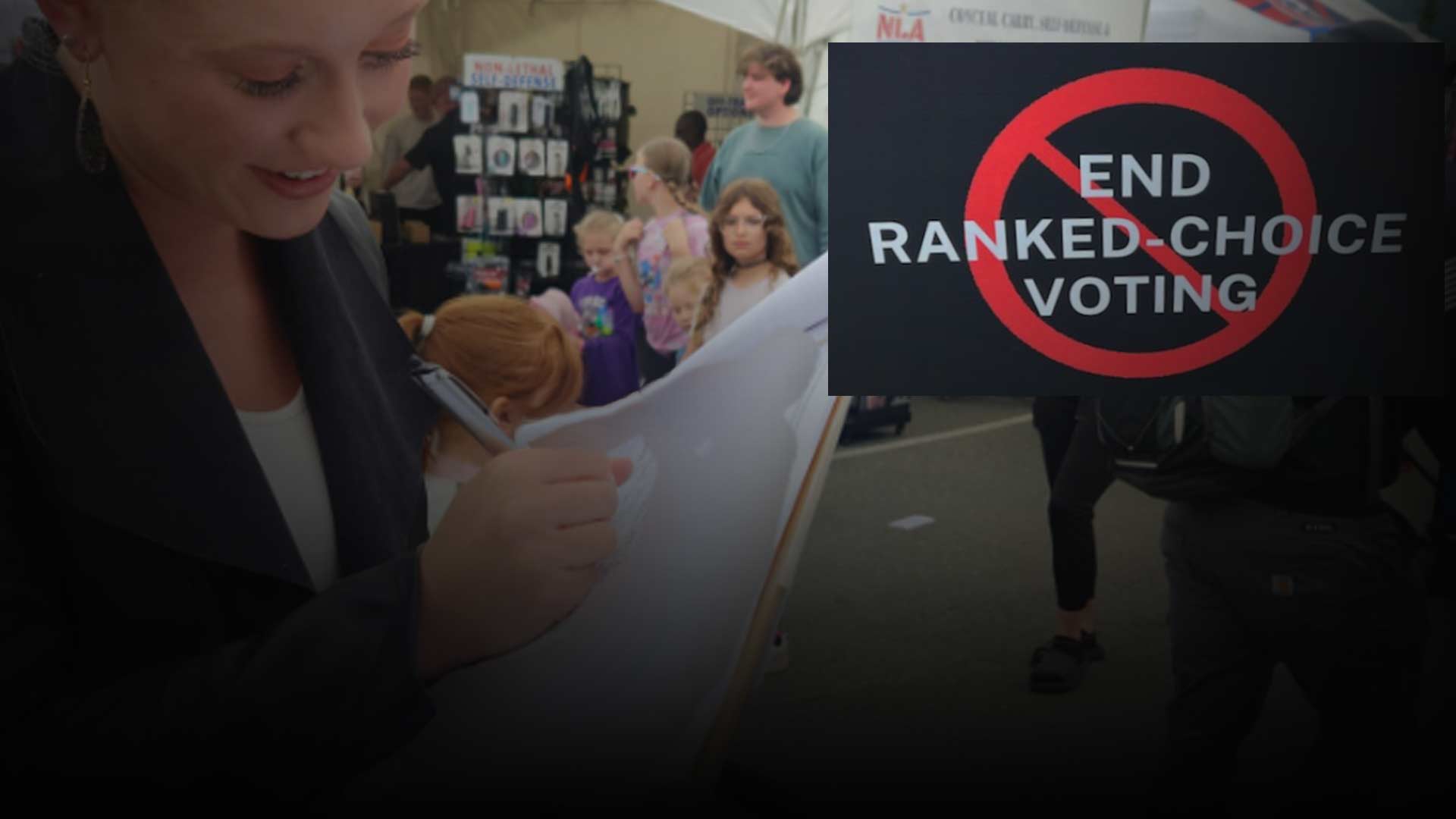
In November, Alaska have a chance to do away with the state’s controversial and often pointless ranked-choice voting system, which was narrowly approved by voters back in 2020.
In addition to discarding the traditional voting system, in which each voter chooses a single candidate in each race, RCV also eliminated the historic party primary system.
Up until 2022, the primary served to weed out candidates who had no legitimate shot at winning in the general election. This allowed parties, and voters, to rally around a single candidate in the general, contrasting them with the other parties’ top candidates.
Under the current RCV system, however, the primary election on Aug. 20 is largely pointless in the overwhelming majority of races.
With RCV the top four candidates in every race automatically advance to the general election, regardless of their party affiliation. If there are only three candidates (or less) in a primary race, all of the candidates advance to the general.
This year, 50 seats are up for grabs in the Alaska Legislature, with a total of 115 candidates vying for office. Only two out of 50 races, however, have more than four candidates running in the primary. The remaining 48 races have four or fewer candidates, which means none of them will be eliminated in the primary, regardless of how many votes they earn.
In fact, only three candidates (2.6% of the pool) running for seats in the Alaska Legislature will be eliminated in the Aug. 20 primary.
Prior to RCV, 28 candidates would have been eliminated this year, affecting 19 out of 50 primary contests. Under that former party primary system, voters were allowed to choose their top candidate to run in the general. Now, however, there will be many general election races in which two or more Republicans are running against a single Democrat, thereby splintering Republican support.
ALASKA WATCHMAN DIRECT TO YOUR INBOX
RCV also allows candidates to simply claim they are Republican without any substantial backing from Republican voters, since all voters regardless of party affiliation, can vote for their preferred candidate in the primary or general contests.
In effect, this allows nefarious primary voters to back candidates who may claim a certain party affiliation, but do not actually share the party’s values or agree with their platforms. Essentially, closet Democrats could claim to be Republicans, earn votes from Democratic voters in the primary, and make it to the general under the guise of being a Republicans.
Since the general election will include up to four candidates in each race, voters will be asked to rank the candidates in order of preference. A candidate needs a simple majority of the vote (50 percent + 1) to be declared the winner in the first round of voting. However, if no candidate wins a simple majority in round one, the candidate with the fewest votes is eliminated from the running. Voters who selected that candidate as their first choice have their second-choice votes redistributed to the remaining candidates. This process continues in subsequent rounds until one candidate receives a simple majority.
This allows closet Democrats to siphon off support for the true Republican-backed candidate in round one. Once the closet Democrat is eliminated, the second-place votes for this person (which in many cases will be for the true Democrat) are then awarded to the Democrat.
That wouldn’t be possible under the older primary system, where Democrats had to run against fellow Democrats, and Republicans against Republicans, with the end result being a bonified Democrat running against a legitimate Republican in the general election.
While the Nov. 5 election will be done using RCV, voters have the opportunity to repeal this convoluted system and restore traditional party primaries for future elections.








11 Comments
Well, this will be interesting in District 38. We have three Democrats hoping to stack votes in the General Election to beat me…. I have no idea idea how this is going to work out…
That could work out for you. Peltola proved that to us.
Is there any reason to vote in the Primary?
Waist?
No Experience Needed, No Boss Over il Your FD Shoulder… Say Goodbye To Your Old Job! Limited Number Of Spots
Open……. shorturl.re/7dzpp
Rigged choice voting is a dirty game designed only to benefit candidates who would not win an honest election, all with the intent to keep the ‘D’estroyer party in power. Dishonesty is meaningless as there are no absolutes, or scruples, or honor. Lying is just another acceptable means to achieve the nefarious end goal.
We are stuck with this abomination for the next election and Lord willing we can get rid of it. In the meantime, VOTE – and rank the Republicans but no one else. Plug your nose and do it if a conservative candidate is not to your liking. Case in point – please do not be stubborn over the Begich Dahlstrom ticket. Rank both of them in your preferred order. Leave off Peltola. If you do not rank the two conservatives, Mary will win again. That is their plan and purpose of RCV.
Thank You Elizabeth!
That clears up some of my confusion. Even the pole workers were confused, and couldn’t answer my questions with any degree of certainty at all for the last 2 elections. The machine kept kicking my ballot back, and they couldn’t tell me why. It has been very frustrating to say the least.
Waist = the portion of the human body situated between the pelvis and ribcage.
Waste = disposal of otherwise useful goods.
It’s only pointless if you don’t want to send a message! Pick 1 in the primary !! If you get out and vote for 1 it sends a very clear message to DC what expectations are, especially for the one and only congress seat! Use the primary to your advantage.
Doyle Holmes supports rank voting despite his district loudly opposing it. He has also been talking to democrats to try to get their vote. Is he really a republican?
Did Nancy Dahlstrom complete the Watchman interview? I saw Begich but it looks like Dahlstrom skipped it.